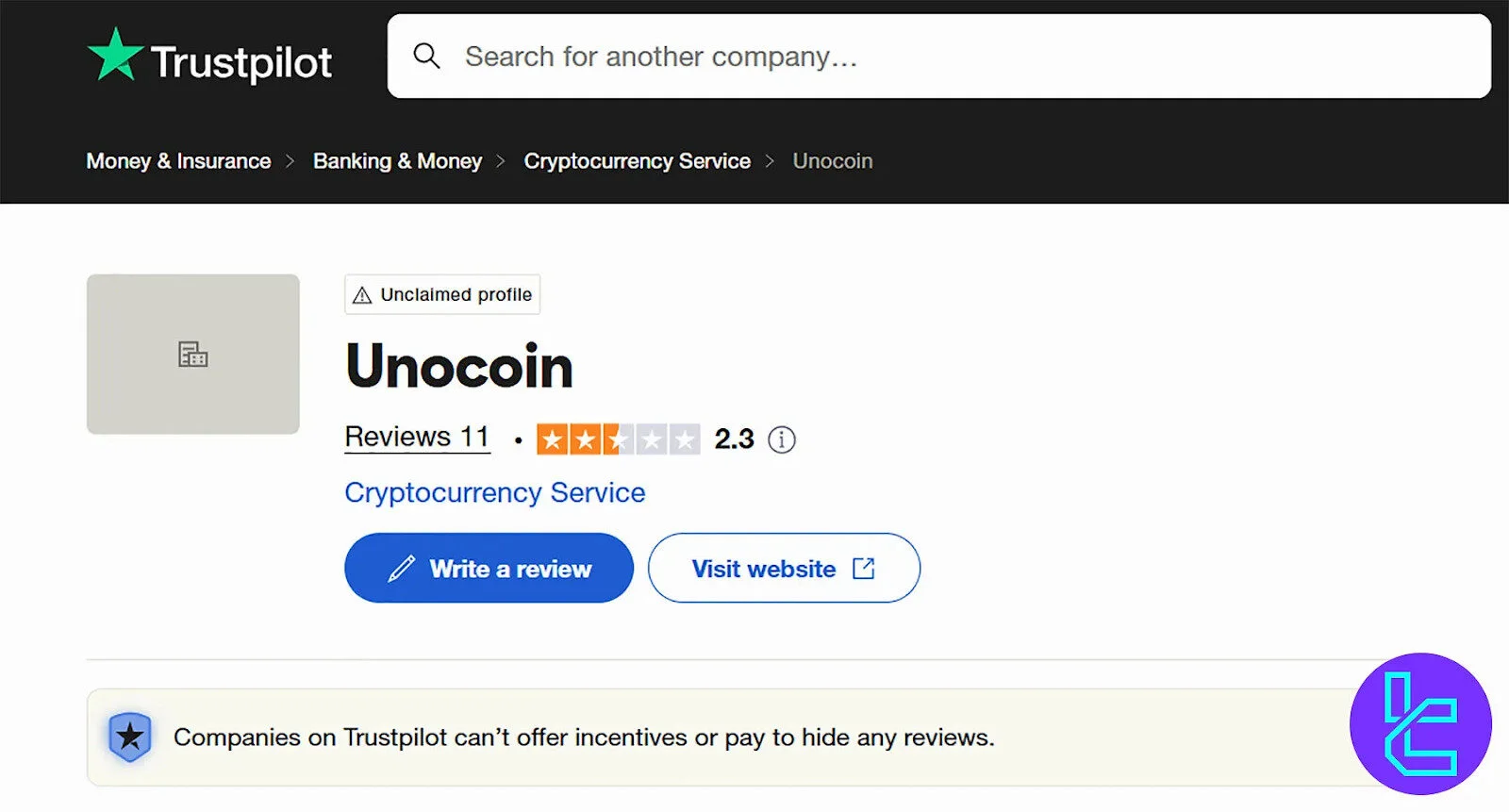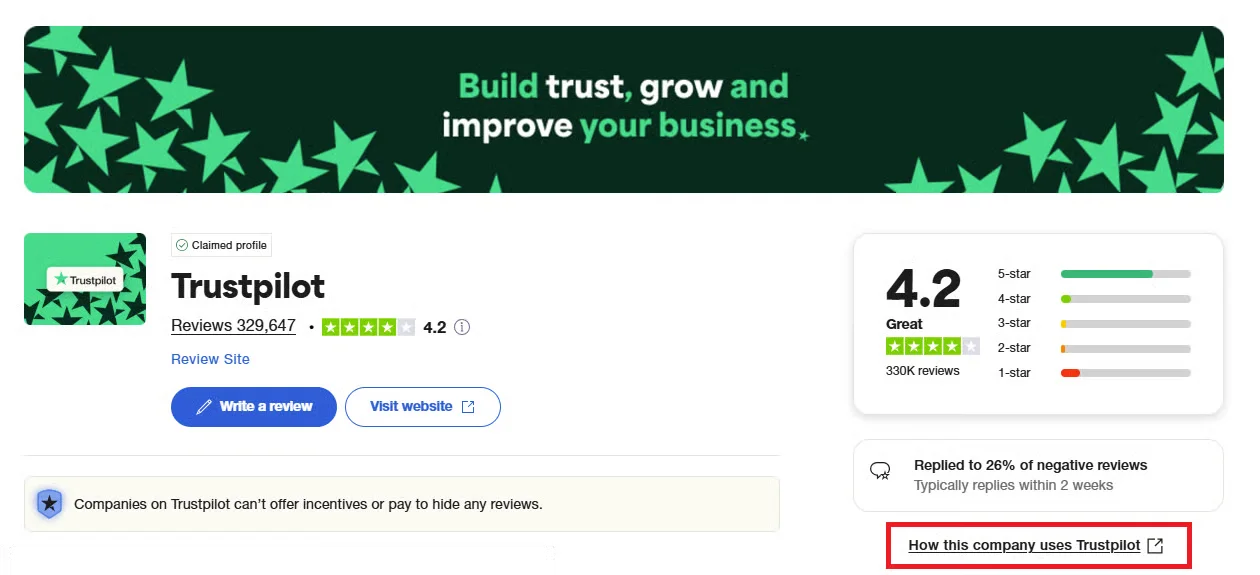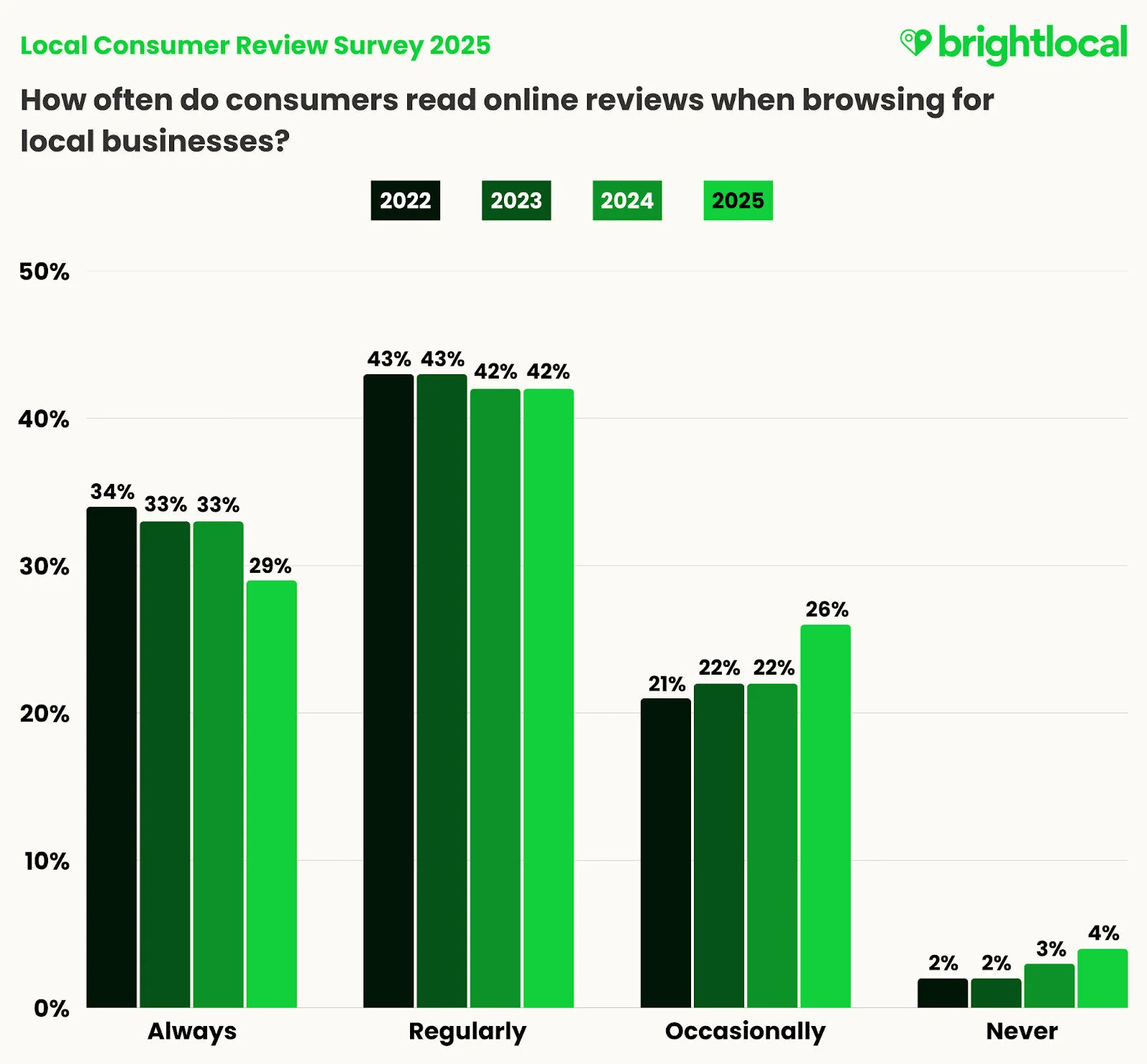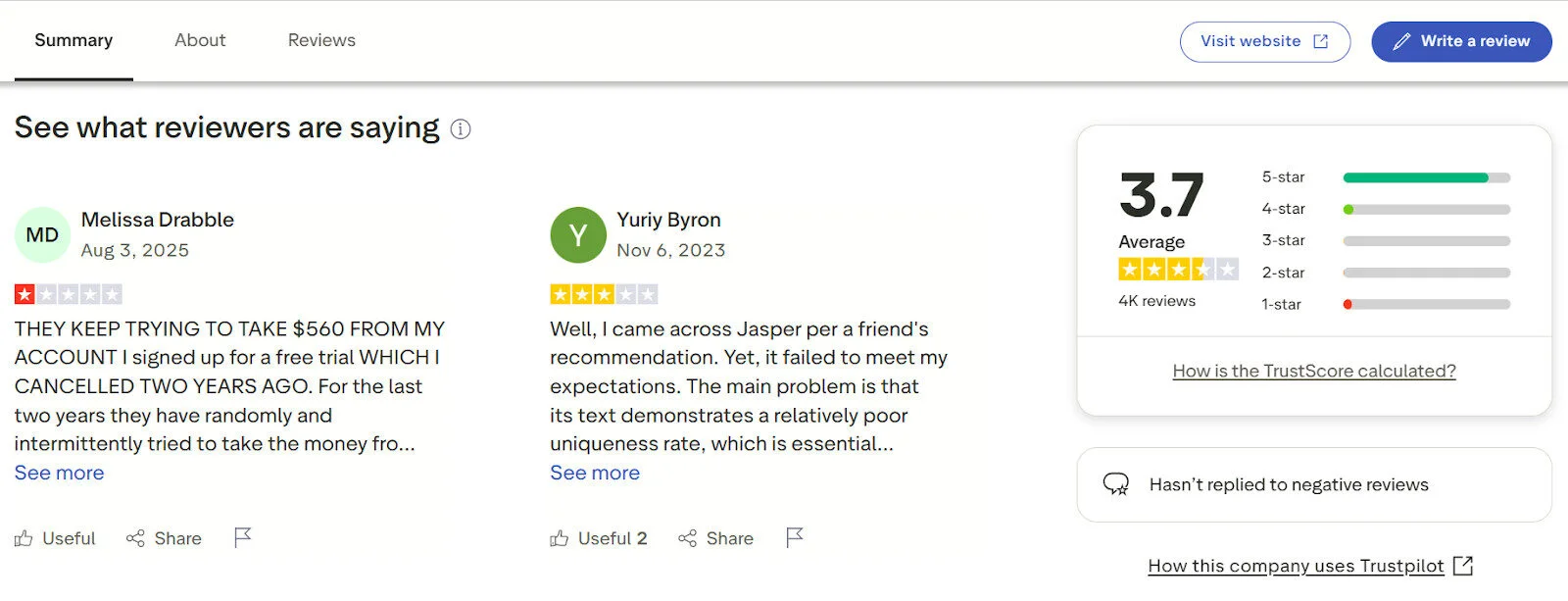Trustpilot is a global review platform that receives over 4 million new reviews every month – that’s a whole lot of customer voices. For B2C businesses, agencies, and marketers, the reviews on their Trustpilot business account can significantly influence their customers’ buying behaviors.
In this guide, we’ll break down everything you need to know about setting up, claiming, and optimizing your Trustpilot Business Page. This will not just help you get listed, but you can also radically build your online reputation and drive growth for your business.
Let’s dive in.
Key Takeaways:
- If you have still not claimed your Trustpilot page, it’s time you claim it, so you can add the correct business information, reply to reviews and add your branding. This will help you unlock control and build credibility on Trustpilot.
- Upgrade to their paid plan to unlock features like TrustBoxes, deeper analytics, unlimited invites etc. With a paid plan you can also remove competitor ads from your page.
- Use your reviews as growth assets by embedding TrustBoxes on key webpages, understanding the customer sentiment and leveraging the SEO value of your page.
What is a Trustpilot Business Page?
A Trustpilot business page is an online profile for a company that showcases its customer reviews and its official TrustScore. However, unlike personal profiles created by individuals themselves, a Trustpilot business page is sometimes automatically created by Trustpilot when customers leave reviews for a business.(More details on this below)
All businesses must do is “claim” it so they can control and customize their profile.
And once you claim it, it basically acts as your control panel—where you log in, read your customer reviews, respond to them, customize your public presence, and track insights about customer feedback.
These pages are designed to build trust with potential customers and serve as a public hub for transparent, third-party feedback.
Before moving further, let’s understand how Trustpilot business pages are different from Trustpilot business profiles.
Trustpilot pages are official public-facing windows where customers can read your reviews, ratings, and company information. Profiles, on the other hand, are more of the “back-end” identity of your business inside Trustpilot’s system. You can create and manage it once you set up a business account.
The profile holds details like your company name, website, industry, and contact info, which then reflect on your public page.
Let us now discuss some benefits of having a business page on Trustpilot
Claimed vs. Unclaimed Business Pages
Trustpilot business pages can either be claimed or unclaimed. Claiming a Trustpilot business page will unlock a host of management features. It would allow you to update your business info, respond to reviews, add Trustpilot widgets to your site, and even pull analytics.
On the contrary, not claiming the page would mean that you would have literally no control over the information displayed or the ability to respond to your customers.
Let’s understand this in detail:
What an Unclaimed Trustpilot Page Looks Like
An unclaimed page is basically Trustpilot’s default template, which displays all reviews written about that business, but it has limited and generic information. It also features a prominent call-to-action for the company to claim its profile.
- It shows your business name, reviews, and an overall star rating (if reviews exist).
- A prominent “Own this business” button will appear on the profile, inviting the business to claim the page.
- There’s no branding, no customization, and key details like an official business description, website, and location may be absent or unconfirmed.
- All reviews written by users will be visible on this page, but businesses cannot respond to these reviews.
- Businesses on unclaimed pages cannot invite customers to leave reviews on their Trustpilot page.
The image below shows what an unclaimed Trustpilot page looks like

Essentially, having an unclaimed page means that your prospective customers can view your limited business information and existing reviews, and you have absolutely no control over it.
Features Unlocked After Claiming Your Page
Once you claim your page (by verifying your business account), you gain access to your Trustpilot Business page. Suddenly, you can:
- Respond to reviews: Publicly respond to all your business feedback on Trustpilot and show prospects that you care.
- Flag inappropriate reviews: Report reviews that you believe violate Trustpilot’s guidelines, such as fake reviews or abusive content.
- Invite new reviews: Use Trustpilot’s tools to send invitations to customers, encouraging them to leave a review.
- Update company information: Ensure your website, logo, and business description appear professional.
- Access analytics: See patterns in customer feedback to improve service.
- Use Trustpilot widgets: Add those trust-boosting review snippets to your website and marketing.
The image below shows a claimed profile of Trustpilot.

Claiming your page doesn’t erase bad reviews, but it gives you the chance to manage your business’s reputation proactively.
Free vs Paid Options for Managing Your Page
Claiming your business page on Trustpilot is absolutely free. You will also get access to all the essential features to help you manage your reputation. Additionally, you will also have the option to unlock more advanced marketing and analytics tools by signing up for Trustpilot’s paid plan.
Let’s learn more about both the free and paid plans by Trustpilot
Free Plan
The free Trustpilot plan gives you a solid starting point for engaging with customers and managing your business profile.
Here is what it offers:
- You can read and respond to all customer reviews, allowing you to address their concerns and build trust.
- Customize your business profile page with your company’s logo and description to create a more branded presence.
- Get verification checkmarks to show transparency.
- You can invite up to 50 customers each month to write reviews for your business.
- Get access to a basic widget that can be embedded on your website.
- Access to Trustpilot’s basic support center is also included.
Paid Plans
Trustpilot’s paid plans, such as Standard, Plus, Premium, and Enterprise, offer escalating features for businesses with more advanced marketing and growth goals. These plans can be expensive, with some starting at hundreds of dollars per month.
Here is what the paid plans offer you:
- You can send an unlimited number of review invitations each month, often through automated campaigns.
- Access a wider variety of TrustBox widgets to showcase reviews on your website.
- Your business profile will no longer display ads for your competitors, keeping visitors focused on your brand.
- Gain access to performance insights and detailed analytics that track key metrics like review trends, customer sentiment, and visitor behavior.
- Integrate Trustpilot with other business tools, such as helpdesk and CRM systems, for more streamlined review management.
- Higher-level plans also include features like AI-powered review responses and deeper insights into customer feedback.
- Display your Trustpilot star ratings and reviews as “Rich Snippets” in search results, which can increase visibility and click-through rates.
Read this detailed breakdown of Trustpilot pricing plans to learn more about each of its pricing tiers and their features.
Free vs. Paid: At a Glance
| Feature | Free Plan | Paid Plan (Standard+) |
| Review invitations | 50 invitations per month | Unlimited, automated invitations |
| Profile customization | Basic logo and business description | Enhanced customization, no competitor ads |
| Website widgets | Limited “review collector” widget | Wide variety of promotional widgets |
| Marketing assets | Limited social sharing | Rich snippets, marketing assets, and social media tools |
| Analytics | Basic performance data | In-depth customer insights and performance data |
| Integrations | Limited options | More integrations with e-commerce, CRM, and other platforms |
| SEO benefits | Standard search indexing | Star ratings in Google search results |
For most SMBs starting out, the free version is enough to establish credibility. However, agencies and larger businesses can opt for their paid plans to scale their review collection and integrate Trustpilot into their marketing tech stack.
How to Claim Your Trustpilot Business Page
Claiming your Trustpilot business page is a simple process that helps you take control of how your brand shows up online. Here’s how to get started:
Step 1 — Find your existing page on Trustpilot
- Go to the Trustpilot Business website
- Use the search bar (as shown in the image below) to find your business by its name or website domain.
- If your business is already listed, you will find an existing profile page. If not, you can create one; more on this is discussed in later sections.
Step 2 — Claim Your Page (Email/Domain Verification)
- Click on the “Claim your free profile” or “Claim your business page” button, which will be prominently displayed on your unclaimed page.
- You will be prompted to create a Trustpilot business account. This is a separate account from a standard Trustpilot reviewer profile.
- Provide the necessary information, including your name, company name, website, and business email address.
- Make sure to use an email address associated with your company’s domain, as this helps Trustpilot verify your ownership.
Step 3: Verify Your Business
Trustpilot might ask you to confirm ownership. This can be done by:
- Clicking a verification link sent to your business email, or
- Proving domain ownership (sometimes required for extra security).
Step 4: Access Your Business Dashboard
- Once your account is verified, you will be directed to your Trustpilot business dashboard.
- From here, you can begin customizing your profile by adding a logo, a business description, and other contact details.
- You can also start inviting customers to leave reviews and respond to existing ones.
How to Set Up Trustpilot Business Page
Not every business already has an unclaimed page sitting on Trustpilot. If you are a new business or yours page doesn’t exist, you can build your business presence from scratch.
Here are the steps to follow:
Step 1: Create a Trustpilot Business Account
- Go to Trustpilot Business and click “Start for free” or “Create free account.” You’ll need to sign up with your business email.
- Fill in your company name, website, email ID, job title, annual revenue, etc.
- Use an official domain-based email ID like yourname@yourcompany.com to make verification smoother.
Step 2: Verify Your Business
Trustpilot will ask you to prove you own or represent the business. Usually, this is done via:
- A confirmation email to your official domain
- Or by verifying ownership of your company website
This step ensures that random people can’t set up fake business pages in your name.
Step 3: Build Out Your Business Page
Once verified, you’ll get access to the dashboard where you can:
- Upload your logo and enter general and contact information
- Write a compelling company description and website link
- If you have multiple business locations, you should set up location review pages.
- Next, you should apply for a business category, so it’s easier for your customers to find you on Trustpilot. Read this guide on how to choose a category for your business.
Once your profile is set up, you can start sending out review invitations to get more business reviews on Trustpilot.
Benefits of Having a Business Page on Trustpilot
So, why does a business even need a Trustpilot page? After all, review platforms can feel like a double-edged sword—while all businesses love those five-star reviews, the occasional one-star can sting.
But these pages are more than just your feedback forms; they can be an impressive marketing asset that works for you 24*7. Here’s how these pages can benefit you:
1. Trust & Credibility
Here’s a simple fact: People trust people more than they trust ads. A recent consumer review survey by BrightLocal found that 29% of consumers always read online reviews, while 42% of them read reviews regularly when browsing for local businesses.

A Trustpilot Business Page gives your brand that social proof at scale. Instead of you propagating yourself, your happy customers can promote you—and that UGC content is far more persuasive.
Plus, Trustpilot is a recognized third-party platform, which means reviews there carry more weight than testimonials just sitting on your website and social media pages.
2. SEO / Online Visibility
Trustpilot pages often rank high on Google when someone searches for your brand name with “reviews” (and let’s be real, they do). To test this, we looked for Jasper reviews on Google, and its Trustpilot page showed up, as shown in the image below.

Even better, Google sometimes pulls star ratings directly into search results (just like the 3.7-star reviews for Jasper, in the above image). This usually happens when Trustpilot reviews are integrated with your site.
Those golden stars can literally lift your click-through rates, making your brand stand out in crowded search results.
3. Customer Feedback Loop
A Trustpilot Business Page also acts as a feedback engine. Reviews bring you the direct public opinion, so you would always know what’s working and what’s not. Instead of guessing where to improve, you’ve got a free focus group giving you insights daily.
The image below of Japer’s business page clearly highlights customer feedback, providing the business with some much-needed meaningful insights.

A smart strategy here would be to not just collect these reviews but also respond to them. A quick, empathetic response to a negative review can turn critics into loyalists and demonstrate to prospects that you genuinely care.
Here are some tips that businesses can use when responding to reviews on Trustpilot.
4. Competitive Advantage
Here’s a reality check: your competitors are either already on Trustpilot or they will be soon. Having an active, well-managed Trustpilot page positions you as the business that customers can verify. In a world where trust is a currency, this gives you an edge.
Imagine two companies: one has a polished Trustpilot page full of reviews, the other has radio silence. Who would you pick? Customers typically choose businesses that appear transparent and open to feedback.
5. Drives Traffic
Yes, your Trustpilot page can actually funnel traffic back to your website. When visitors read reviews and feel confident, they’re more likely to click through to your site and convert.
There are many ways in which Trustpilot reviews can be used for marketing. One such way is to embed Trustpilot widgets on your homepage or product pages, turning casual browsers into confident buyers. Reviews don’t just sit there; they actively push people closer to the checkout button.
Improving Discoverability on Trustpilot
Trustpilot is a public forum where customers share their experiences, and potential customers can read product reviews to make informed purchasing decisions. But for all this to work out, your business page must not only be live but also discoverable.
Let us now discuss some factors that can help businesses improve their page visibility on Trustpilot
1. Frequency and Quality of reviews:
One-time review spikes don’t help long-term visibility. Trustpilot favors businesses that collect reviews steadily over time. Using review invitations (manual, automated, or via integrations like Shopify or HubSpot) can help you maintain a consistent flow of feedback.
Additionally, encouraging keyword-rich reviews also enhances visibility. For example, a customer writing “Great digital marketing services in Dallas!” helps you rank better than just “Great service.”
2. Respond to Reviews (Both Good & Bad)
Active engagement tells both Trustpilot and your potential customers that your business is alive, transparent, and trustworthy. Pages where the business regularly replies often feel more credible, which can encourage Trustpilot to rank them higher in category searches.
3. Optimize Your Company Description
A comprehensive and customized profile projects professionalism and provides customers with a clear picture of your business.
- Add a detailed company description: A description of at least 200 words helps customers understand what you offer.
- Upload your logo and header image: A header image (for paid plans) and logo make your page more visually appealing and help it stand out.
- Confirm company details: Adding details such as your registered domain and bank account confirms transparency and builds confidence with consumers.
4. Choose the Right Business Categories
Trustpilot uses categories to help customers find relevant businesses. Selecting the most accurate primary and secondary categories for your business improves your discoverability. The categories are based on the Google Business Profile system, so consistency between the two profiles is helpful.
5. Add Rich Media (Logo & Branding)
A Trustpilot page with a logo, branded visuals, and links looks more professional than a barebones listing. People are more likely to click (and leave reviews) when a page looks polished.
6. Leverage Trustpilot’s SEO Value
Your Trustpilot page itself ranks on Google. To boost this, make sure:
- Your NAP (Name, Address, Phone) matches what’s on your website and Google Business Profile.
- You’re linking back to your Trustpilot page from your site and socials (Google loves cross-linking).
Collecting and Managing Reviews Through Your Business Page
Once your Trustpilot business page is up and running, the next step must be to invite genuine reviews from your real customers. Making this process proactive and strategic will help you take control of your online narrative.
Here’s how you get started:
Invite Customers to Leave Reviews
There are multiple ways you can invite people to leave reviews on your Trustpilot page:
- Direct links: Share your Trustpilot review link via email, SMS, or even a WhatsApp follow-up after purchase.
- Automated invitations: Paid Trustpilot plans integrate with platforms such as Shopify, WooCommerce, or HubSpot, enabling customers to automatically receive a review invitation after a transaction.
- QR codes: For physical businesses, generate a Trustpilot review QR code and print it on receipts, packaging, or even posters at checkout.
- Social media nudges: Post a “We’d love your feedback!” message with a direct review link.
Read this guide to learn more ways on how to improve your trustpilot rating.
The image below shows a Trustpilot review request form where the business Michael Stewart Menswear invites customers to share feedback on their experience, covering aspects like service, price, delivery, and returns.

Here are some more ways you can ask customers to leave reviews for your business.
Best Practices for Requesting Feedback
Here’s how to get more reviews without annoying your customers:
- Ask at the right moment: Don’t send review requests too early (before they’ve experienced your service) or too late (when the excitement has worn off). A sweet spot is 2–5 days after delivery or service completion.
- Keep it simple: Short, friendly messages encourage people to leave reviews. Example: “We’d love to hear your thoughts – it only takes 2 minutes!”
- Be transparent: Let them know reviews help others make better decisions.
- Don’t cherry-pick: Asking all customers—not just the happy ones—keeps your reviews authentic and trustworthy.
Responding to Positive and Negative Reviews
How you respond to reviews can be as important as the reviews themselves.
Responding to positive reviews:
- Show appreciation: Thank the customer by mentioning specific details from their review. It shows that you’ve read it and value their input.
- Reinforce your brand: Highlight key aspects of your business, such as great customer service or the quality of your product.
- Keep it brief: Short, simple, and helpful replies are appreciated.
Responding to negative reviews:
- Stay calm and professional: Take a moment to evaluate the review’s intent before reacting.
- Empathize: Acknowledge the customer’s frustration and apologize for their negative experience.
- Offer a solution (offline): Take the conversation offline to resolve the issue privately. For example, invite them to contact you directly via email or phone.
- Maintain perspective: Address valid complaints but professionally dismiss any abusive or irrelevant remarks.
Here are some genius ways to respond to negative reviews with empathy and professionalism.
Reporting/Flagging Inappropriate or Fake Reviews
Not all reviews are legit. Sometimes, competitors or trolls might leave misleading comments. Trustpilot has tools to handle this:
- You can flag a review if it violates Trustpilot’s guidelines (offensive language, false information, spam).
- Trustpilot removes the review after investigation if it’s proven fake.
- Ensure that you do not overuse this feature and only flag genuine cases; otherwise, Trustpilot may perceive it as abuse.
Managing reviews across multiple platforms (Trustpilot, Google, Facebook, Yelp, etc.) can feel overwhelming – especially for agencies and SMBs juggling multiple clients. That’s where SocialPilot Reviews comes in.
With SocialPilot Reviews, you can:
- Collect and monitor reviews from multiple channels in one dashboard.
- Respond faster without logging into each platform separately.
- Spot trends in customer sentiment and act on them.
This not only saves you time but also helps ensure no review—good or bad—slips through the cracks.
Best Practices for Your Trustpilot Business Page
Setting up the Trustpilot page is just the beginning. The real value lies in converting your page into a true marketing asset. Here are some tried-and-tested best practices every business, agency, or marketer should follow on Trustpilot:
1. Keep your Page Information Updated and Optimized
Your business details are the first impression customers get. Make sure your logo, description, website link, contact info, and categories are always up-to-date. A polished, professional profile builds instant trust and improves discoverability on both Trustpilot and Google.
To better understand how the two platforms differ in visibility and SEO impact, check out this detailed comparison of Trustpilot vs Google Reviews.
2. Consistently Collect and Respond to New Reviews.
A page with reviews from 2019 looks abandoned. Aim to collect fresh reviews every month. Use automated invitations if possible, and always respond – whether it’s a glowing 5-star or a tough 1-star. Active pages feel more alive, and customers love seeing businesses that engage.
If you’re exploring more platforms to manage and collect feedback efficiently, here are some top Trustpilot alternatives for businesses that you can try.
3. Use the Data from Reviews to Improve your Service or Product
Treat your reviews as a valuable source of free business intelligence. If multiple customers mention slow delivery, that’s a red flag to fix logistics. If people love your support team, double down on that strength. Reviews can show you exactly where to improve and where you shine.
4. Showcase Reviews with Trustboxes and Widgets
Trustpilot offers customizable widgets (called TrustBoxes) that you can embed on your website, landing pages, or even email signatures. Imagine a prospect landing on your pricing page and immediately seeing “4.7 stars based on 1,200 reviews.” That’s powerful social proof at the point of conversion.
This image shows embedded Trustpilot reviews displayed on a business website, highlighting customer feedback, star ratings, and an overall average score to build trust and credibility with visitors.

5. Use Page Insights and Analytics to Refine Your Strategy
Your Trustpilot dashboard is a goldmine of data. You can track review trends, customer sentiment, and even benchmark against competitors. Use these insights to refine your customer experience and align your marketing campaigns with what customers actually value.
6. Follow Trustpilot Guidelines to Avoid Penalties
Trustpilot takes authenticity seriously. Avoid shady tactics such as buying reviews, faking feedback, or selectively inviting only satisfied customers. Doing so can result in your page being flagged or even suspended.
Making the Most of Your Trustpilot Business Page
Your Trustpilot Business Page is a living asset that can enhance your reputation and bring in more customers. Therefore, you must claim it, keep it updated, stay engaged, and leverage the data to grow smarter.
That said, we know logging into the Trustpilot dashboard every now and then can feel like another chore on your already packed to-do list.
That’s where tools like SocialPilot Reviews step in. They simplify the process by helping you collect, monitor, and respond to Trustpilot reviews (along with reviews from other platforms) in one centralized dashboard.
Are you ready to streamline your review management and maximize the value of your Trustpilot Business Page? Start your free trial of SocialPilot Reviews today.




